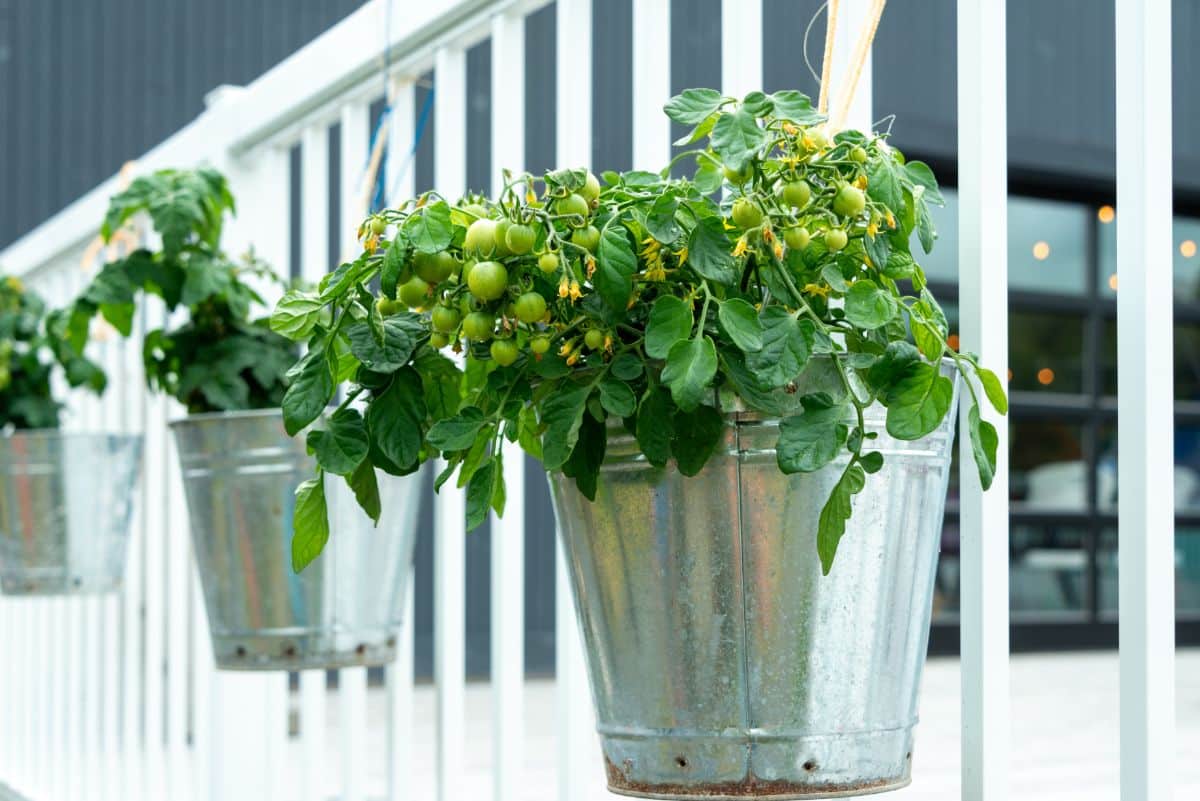
Container gardening has been growing in popularity for many years. Another form of that is growing vegetables in hanging containers.
These can be traditional hanging baskets like the kind that people often grow hanging flowers in, or they can be other types. Other options include unique shapes and styles of hanging baskets, or up-cycled and recycled containers like five-gallon buckets.
Whatever you choose to use for hanging vegetable planters, there are many vegetables that can be grown in them. There are many reasons to do so, too.
Jump to:
Why Grow Vegetables in Hanging Containers?
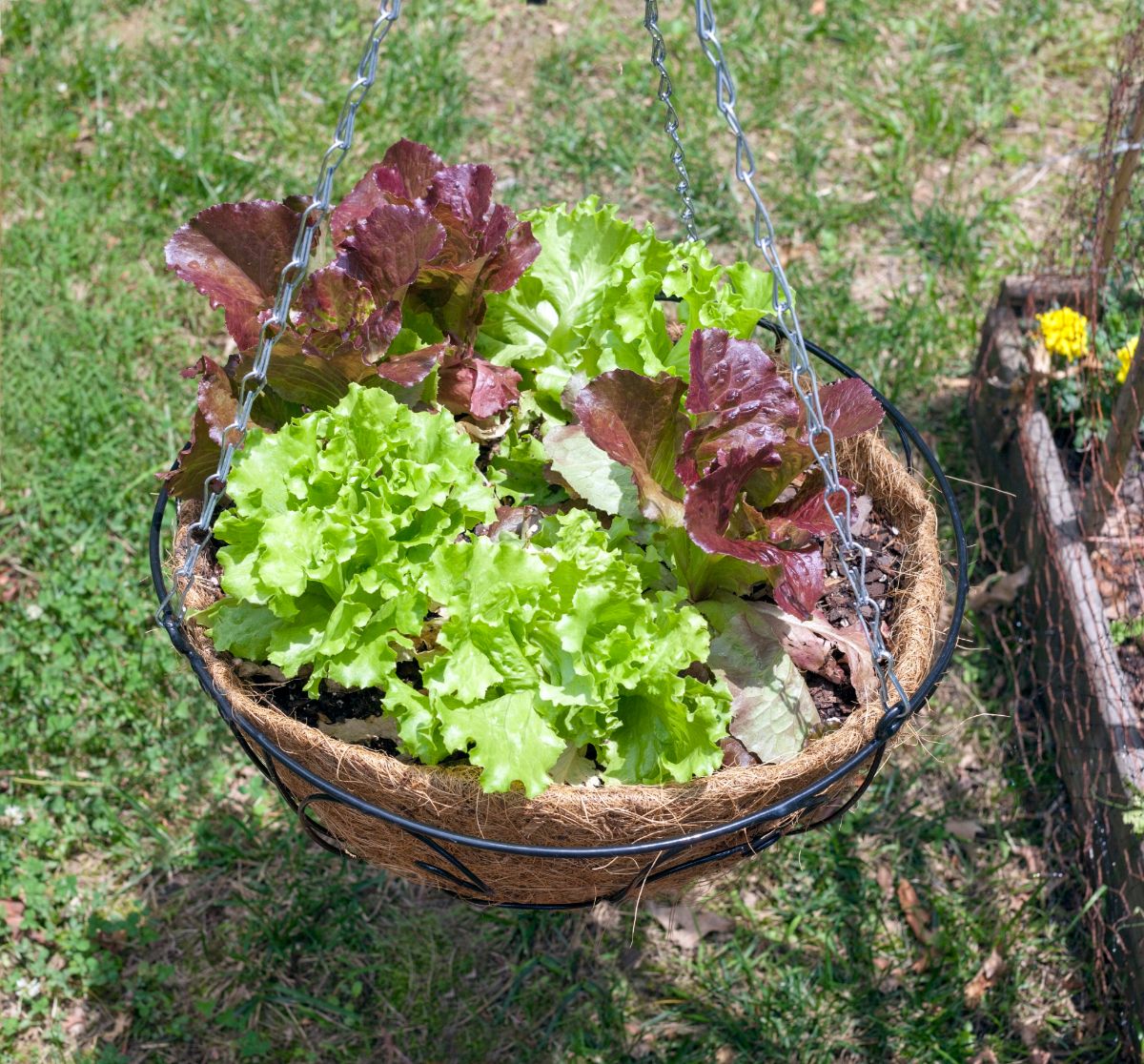
1. They’re easy season extenders!
You can extend your growing season on both sides (early and late) by growing vegetables in baskets. If you’re really blessed with extra light, a greenhouse, a sunroom or a very sunny room, you could grow vegetables inside throughout the year.
If you’re not up for that, you can start your hanging veggies from seed right in the hanging pots to get a jump on the season and have them producing long before plants in the ground are producing.
Also, because they are portable, you can bring your plants in at night when the early frosts hit and take them back outside during the warm days to keep them growing and producing. Even if you garden in raised beds or in the ground, you might choose to do this to keep the fresh veggies going as long as you can.
2. Functional decoration
Who says vegetable plants aren’t attractive? Not vegetable gardeners! In fact, edible landscaping is a very popular method of gardening. Think of vegetables in hangers as an extension of that method.
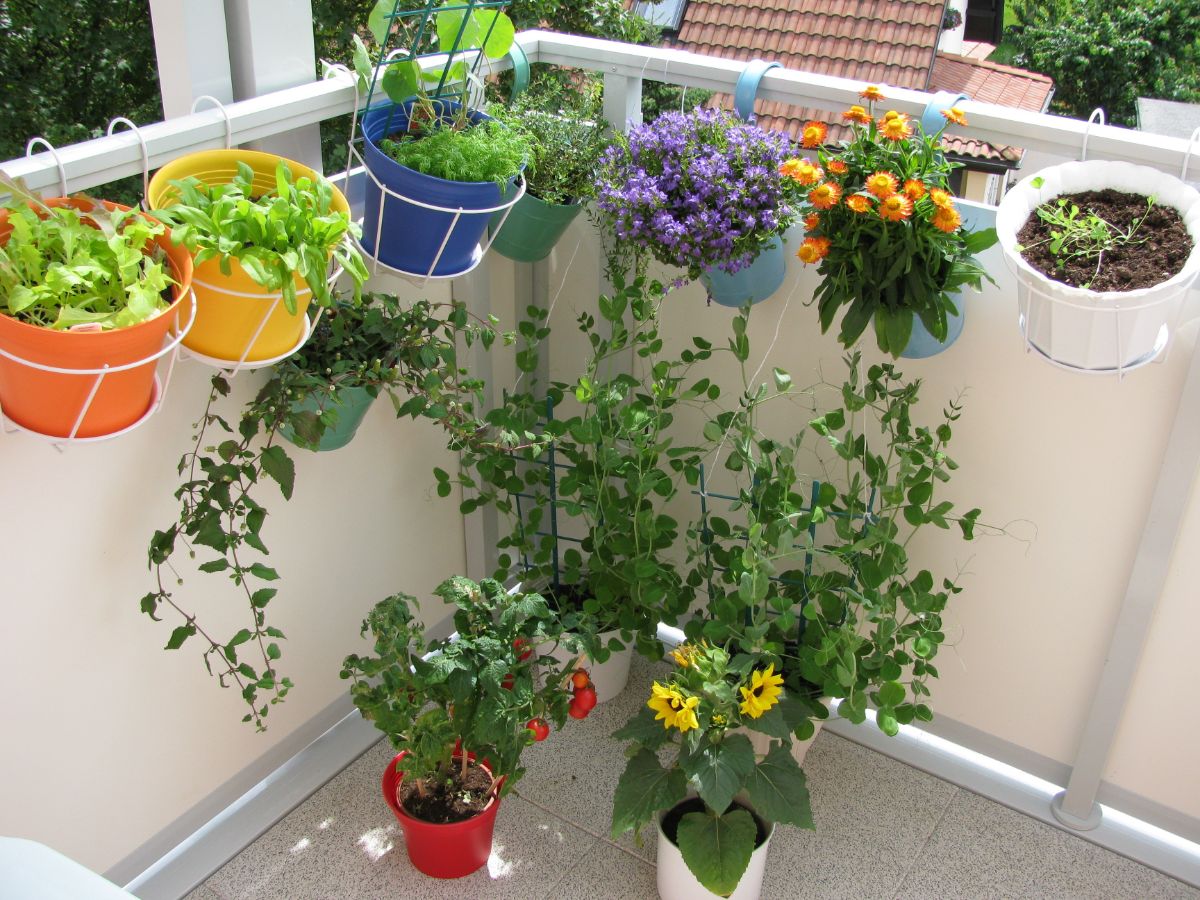
Trailing, blossoming vegetable plants flush with bright produce can be quite lovely, indeed. Plus—you get vegetables! Food!
3. They’re space savers and space extenders!
Growing in hanging containers helps you maximize gardening in a limited space. You can grow in containers on the ground or on a porch or patio, and then go up to double your growing space. You may be able to grow more in hangers than on the surface level because you don’t have to worry about trip hazards or leaving room for walkways.
4. Location versatility
Hanging plants are perfect for decks and porches, but that’s far from being the only place you can grow hanging vegetables. Think outside the box!
The tops of garden or yard walls, building and shed walls, along the inside of fences, patios, or even set around the yard on freestanding poles are all options.
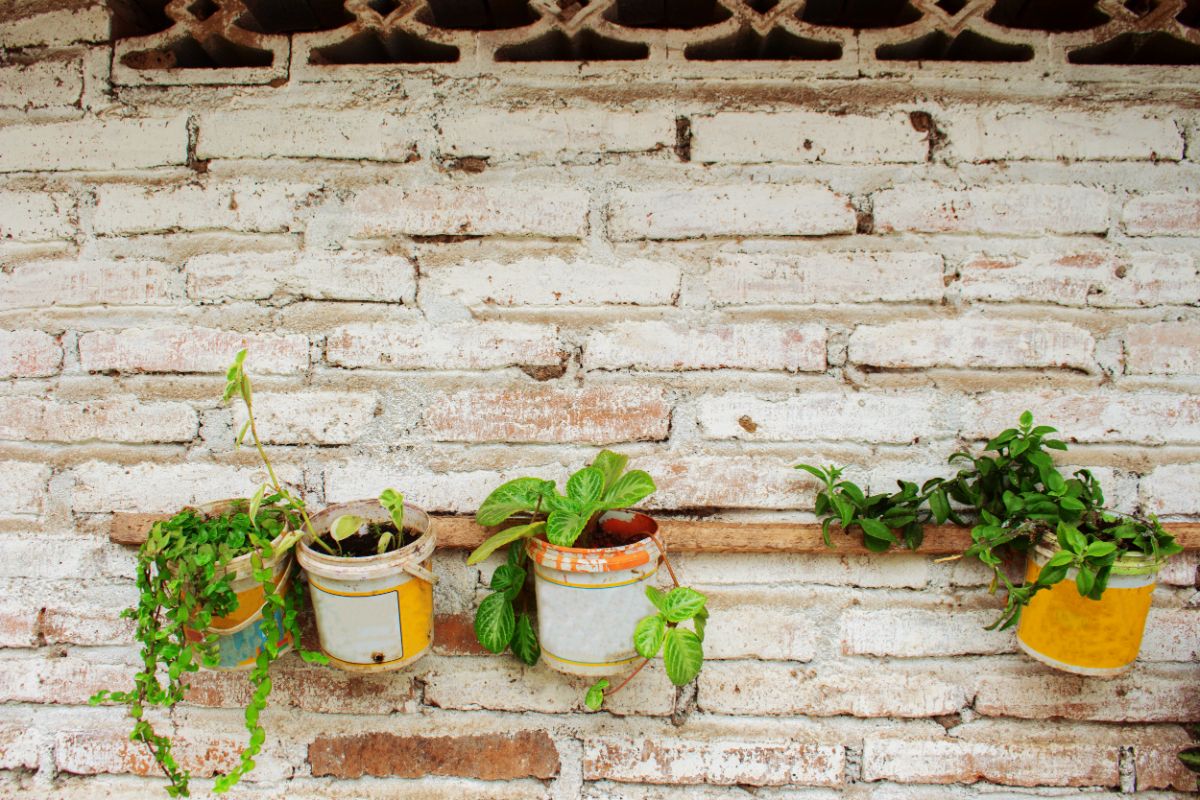
5. Midsummer heat control
If you live in an area where it gets hot, even for a part of the summer, then growing things that easily bolt is difficult. This can leave you with a long lull without produce like lettuce, spinach, greens, herbs like cilantro, and roots like radishes. If you grow these things in a hanging basket, you can hang them where they will get some shade or move them into shade in the heat of the day. This can help you keep a more consistent harvest through the whole summer.
6. Pest control
Hanging planters, while not 100% pest-proof, are harder for slugs and crawling insects to get to. Rabbits, moles, voles, and the like can’t get to them, either. Deer, birds, and other problem wildlife are less likely to come up to a populated human area like a porch where you regularly spend your time.
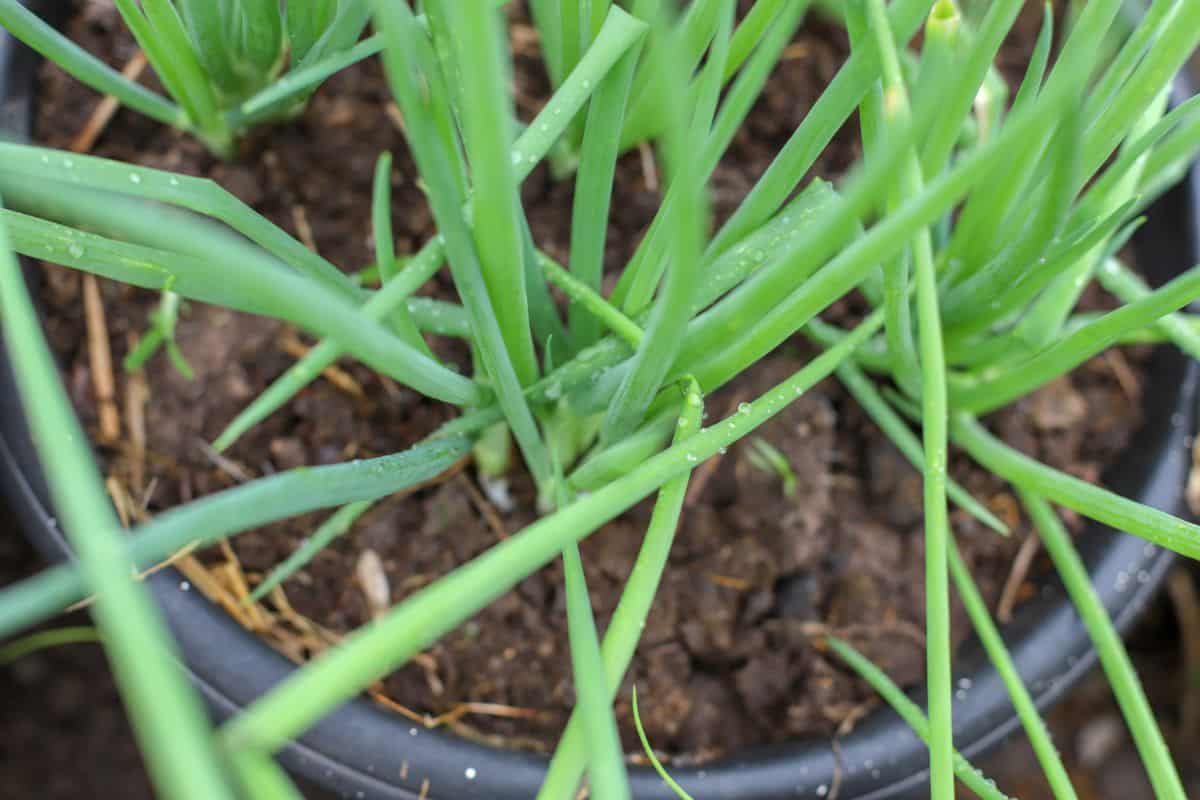
Even when you do have unwanted visitors or diners, it’s often easier to spot the pests at eye level and on more separated plants. It is also easier to treat a single pot as opposed to a large garden spread across a large piece of ground.
7. Disease control
There are a few things about growing in hanging containers that make diseases easier to control. Again, there is no method of growing that guarantees you’ll be completely disease-free, but you can tip the scales in your favor. Hanging containers make this easier to do.
Hangers get more airflow than plants in the ground. They also tend to be less crowded. As with pests, individual plants are easier to spot diseases on, and easier to treat.
Because hangers are not growing in the ground, you won’t be fighting fungal diseases that come from it. Limiting soil splash is one of the best ways to limit soil-borne diseases, and with vegetables in containers, there’s no soil splash.
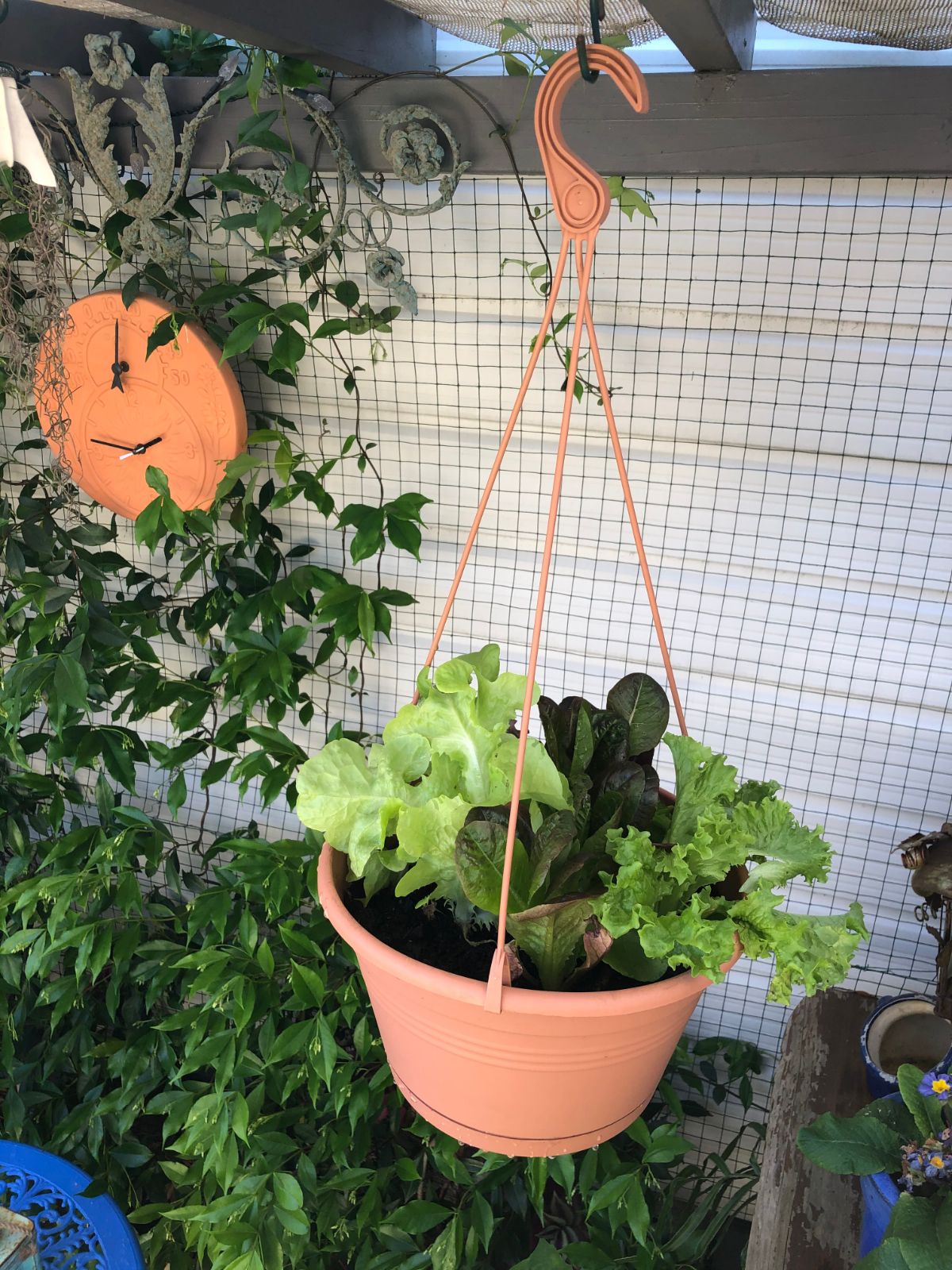
8. Easy access for picking
No bending, easier to spot, and easy to reach out and pull or cut—it’s just plain easy to pick vegetables from hanging baskets.
9. No weeding!
With the exception of a wayward wind-blown or bird-planted seed, there’s no weeding involved in container gardening. This holds true for hanging containers, too. Imagine a harvest without the need to weed!
What Vegetables Can You Grow in Hanging Containers?
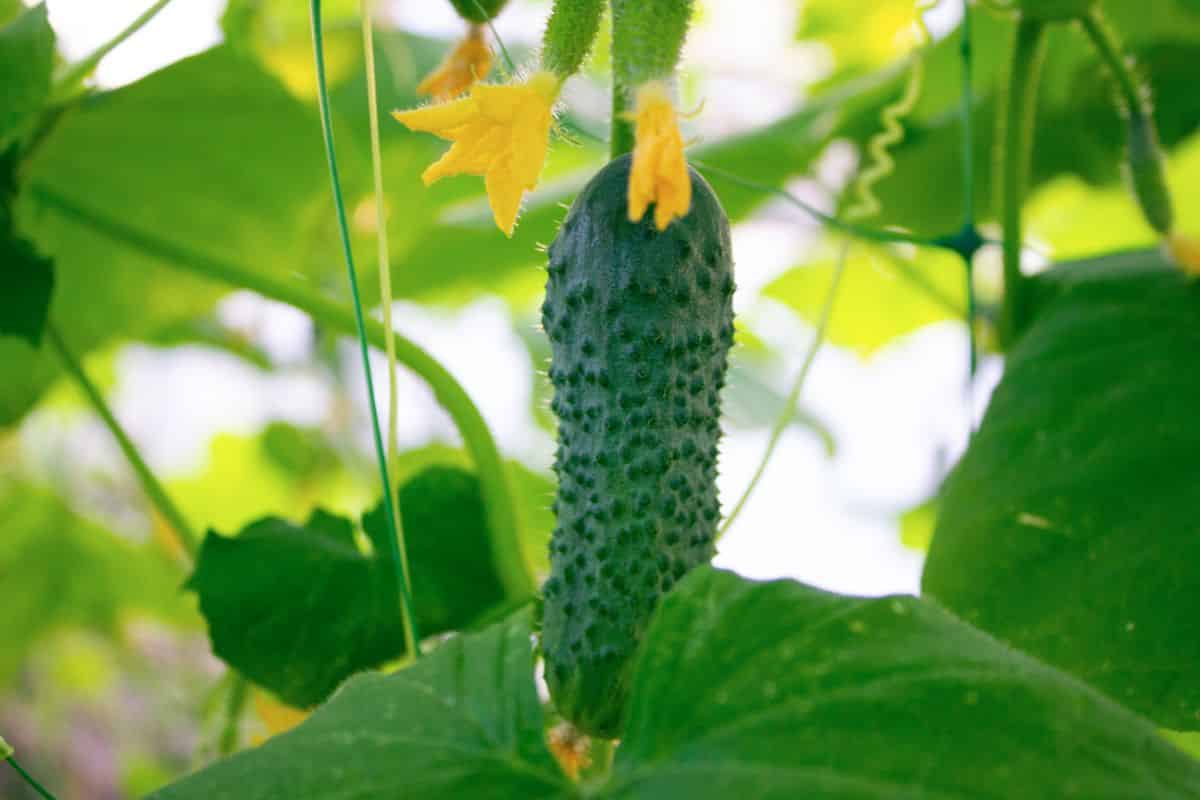
If it tumbles or trails or usually needs to be tied, you can probably grow it in a hanging container. If it is compact or relatively short, you can probably grow it in a hanging container.
To be more specific, here is a list of things that are known to grow well in hanging baskets and containers:
- Cucumbers
- Lettuce
- Various greens including spinach, arugula, Asian cabbages, mizuna, and others
- Swiss chard
- Tomatoes -- Large tomatoes do well in upside down, topsy-turvy style planters. You can also plant them normally then hang the bucket and the tomato plants will trail over the edge. Full-sized tomato plants do need a large bucket. Five-gallon buckets are a great solution. For best results, look for trailing varieties. Determinate tomato varieties are best because they stop growing at their given height, so they don’t grow as large as indeterminate varieties.
- Dwarf cherry tomatoes -- Cherry tomatoes are perfect to have in hangers so you can have them right on hand. The difficulty with growing cherry tomatoes in containers is that they are almost always indeterminate plants, and they can grow huge and bushy. Not to worry, though, there are dwarf cherry tomatoes that are perfect for hanging planters! Minibel, Tiny Tim, and Orange Hat are three varieties, but there are plenty of others.
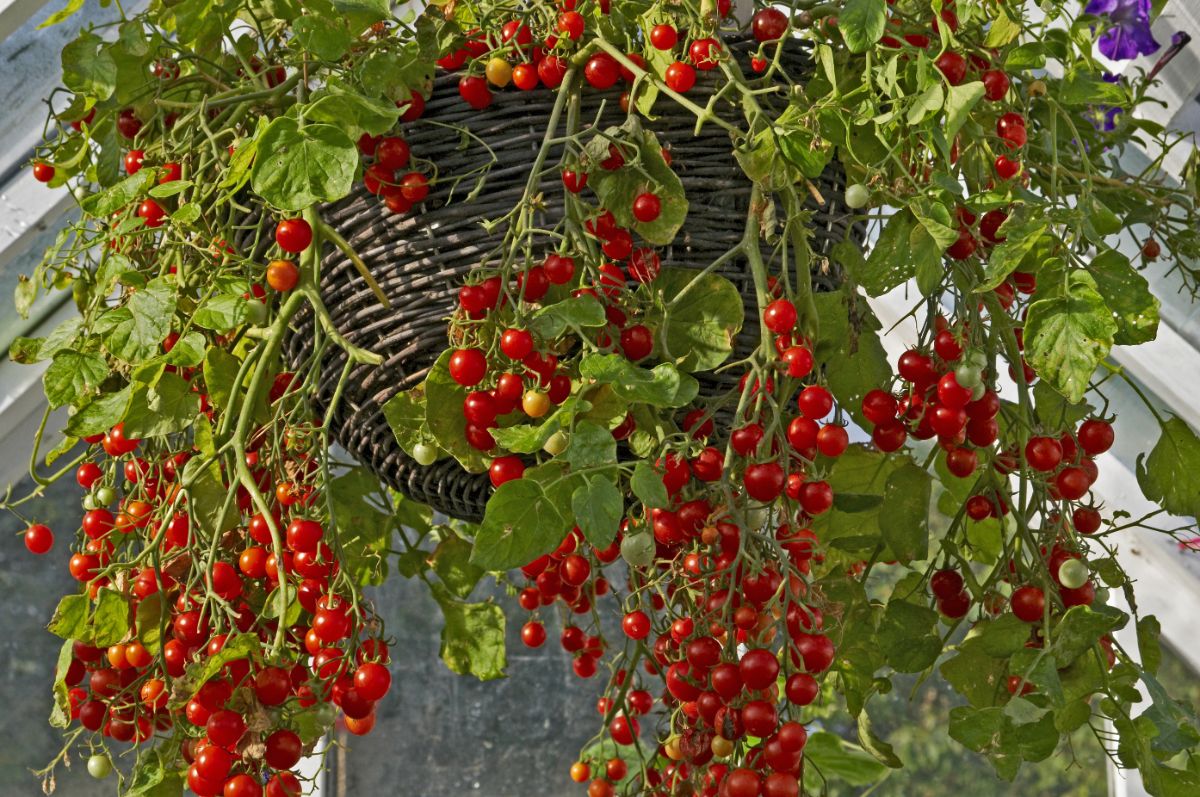
- Short root crops – As long as they don’t require too deep a soil, you can grow shorter root crops in hangers, too. Some good options are half-long carrots, radishes, and beets.
- Peppers – choose smaller varieties that don’t grow too tall like chili peppers and hot peppers, mini bell peppers, and lunchbox-type peppers. Most any dwarf, short, or bushing variety of pepper will work in a hanging container.
- Eggplant – grow dwarf eggplant upright, or full-sized eggplant planted upside down, topsy-turvy style.
- Tomatillos (grow these upside down or keep them well trimmed)
- Ground cherries (look for a smaller variety and grow them upside down or keep them trimmed)
- Cucamelons (also known as Mexican sour gherkins) These do well because the fruit are small, so you won’t have a weight issue with the fruits hanging.
- Small-fruited squash -- Zucchini and summer squash will work and are best picked on the smaller side; also, smaller varieties of squash like Buttercup, mini butternut, patty pan, and acorn squash. Grow some dwarf pumpkins and mini gourds and you’ll have ready-made décor come fall!
- Sweet potatoes – The vines look beautiful hanging down from a planter. They also look lovely in a flower box or window box planter!
- Peas – The blossoms are pretty and delicate. Look for shorter varieties and dwarf varieties and they won’t get too out of hand. Sugar snap and edible pod varieties are a real treat.
- Beans -- Bush bean varieties are more compact and will nicely fill a hanger. Pole varieties can also be grown in hangers and will tumble and trail but can get quite long so check the variety and try to find one on the shorter side.
- Green onions – these are good to sprinkle in other baskets as companions or center accents to deter bugs. DO NOT plant onions in pots with peas and beans, though, as they can stunt the growth of legumes.
If you’re not sure if you can grow your favorite vegetable or variety in a hanging container, go ahead and give one a try. After all, everything on this list was something someone once experimented with in a hanging container!
Planting Tips for Hanging Vegetable Planters
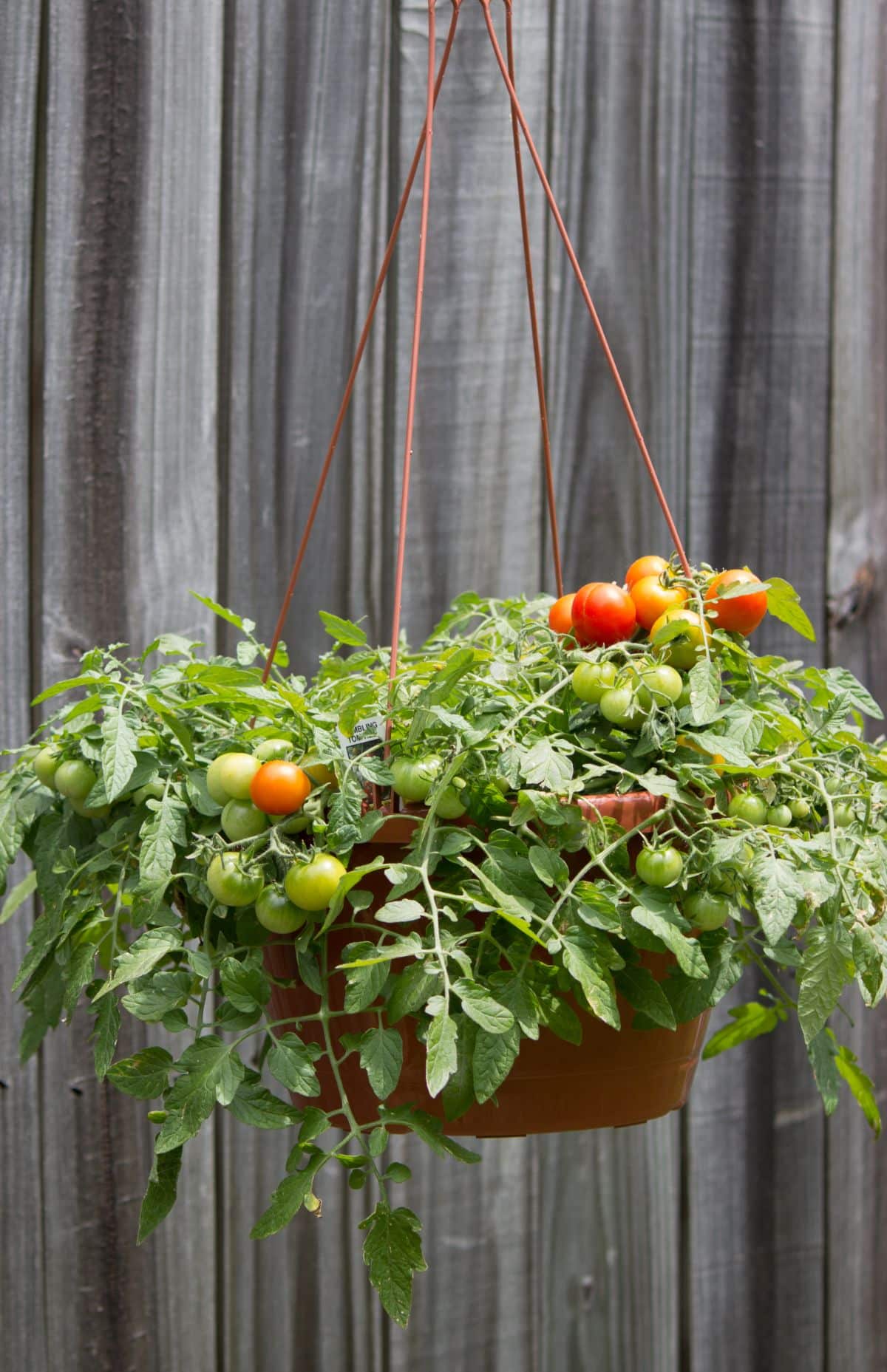
- Smaller plants and plants that have a short days-to-harvest can be planted closely. This includes lettuce (especially if grown for baby or salad greens that will be cut young), strawberries, radishes, etc.
- For smaller plants you can cut holes in the sides of the hanging basket, too, and tuck transplants into the holes, giving more of a trailing ball-like effect. Again, strawberries, lettuce, and greens are good for this.
- Keep your hanging planter hung low enough for you to reach for watering and fertilizing.
- Keep them high enough to keep the plants off the ground.
- If you are hanging your vegetable plants on a roofed or covered area, make sure they get enough direct sunlight each day. Your hanging vegetables will need the same full light that vegetables in the ground or raised beds need.
Maintaining Vegetable Hanging Plants
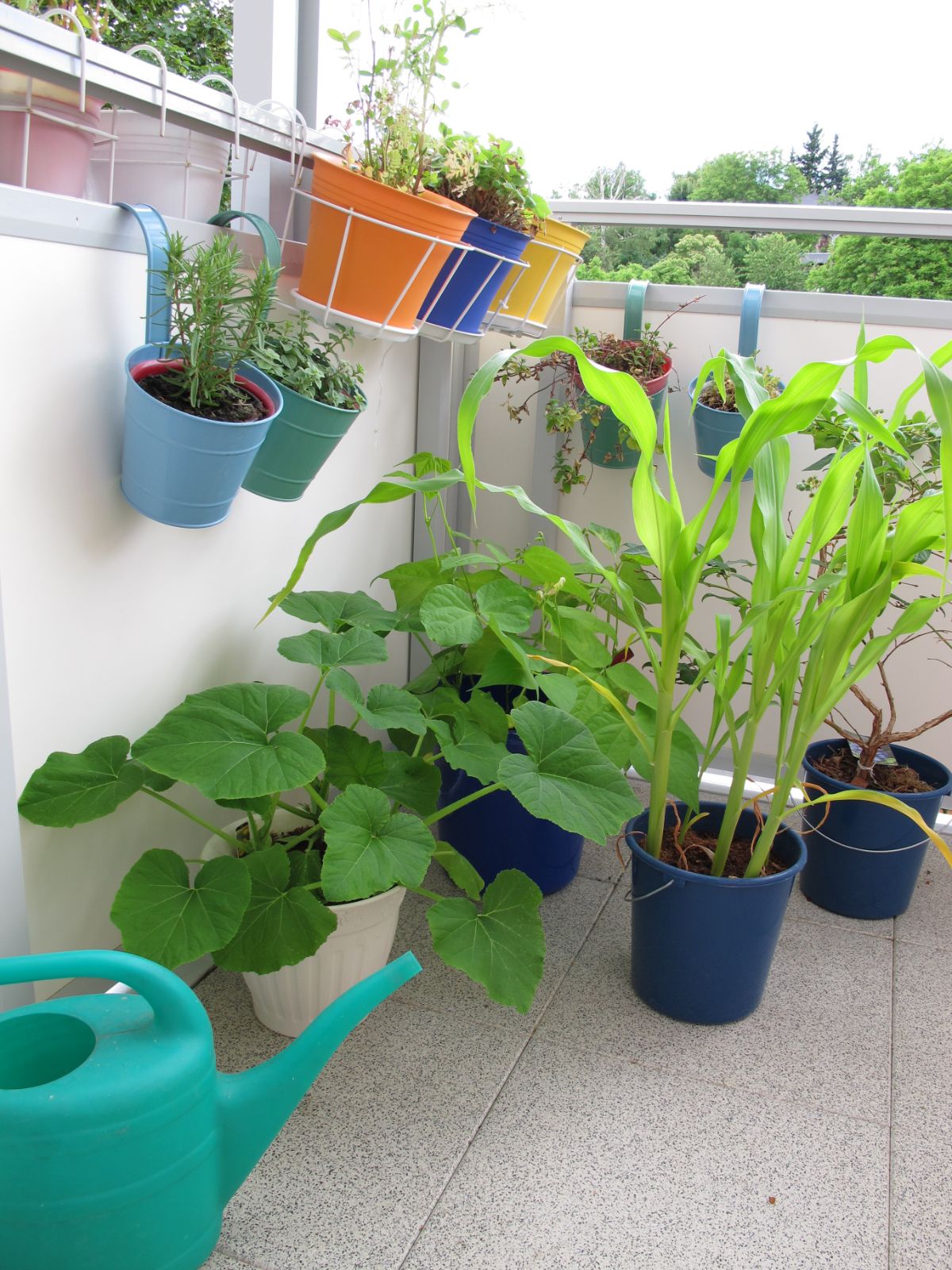
- Container plants need frequent watering. Watering daily is not uncommon.
- Check planters daily and water if the top of the soil is dried out.
- Frequent watering and plant needs mean that soils will become depleted of fertilizer and nutrients quickly. Plan to fertilize your pots weekly (at least biweekly).
- Harvest regularly. This will ease weight on hanging vines and encourage continued production.
- If you must choose, give the most sun to the plants that need it most. If you have to keep hangers in a lower light or an area that gets partial shade, make it the leafier greens and things that tend to bolt in high heat. It may slow their growth, but most will tolerate it.
- 6-8 hours of light is ideal
- Protect hanging vegetables from high winds to limit breakage and damage. If possible, choose a spot that is more protected from the wind. If storms are severe, bring the plants inside. Remove broken stems.
- Turn your baskets regularly if one side is facing a wall or does not get any sun. This will prevent yellowing on one side and will keep growth even.
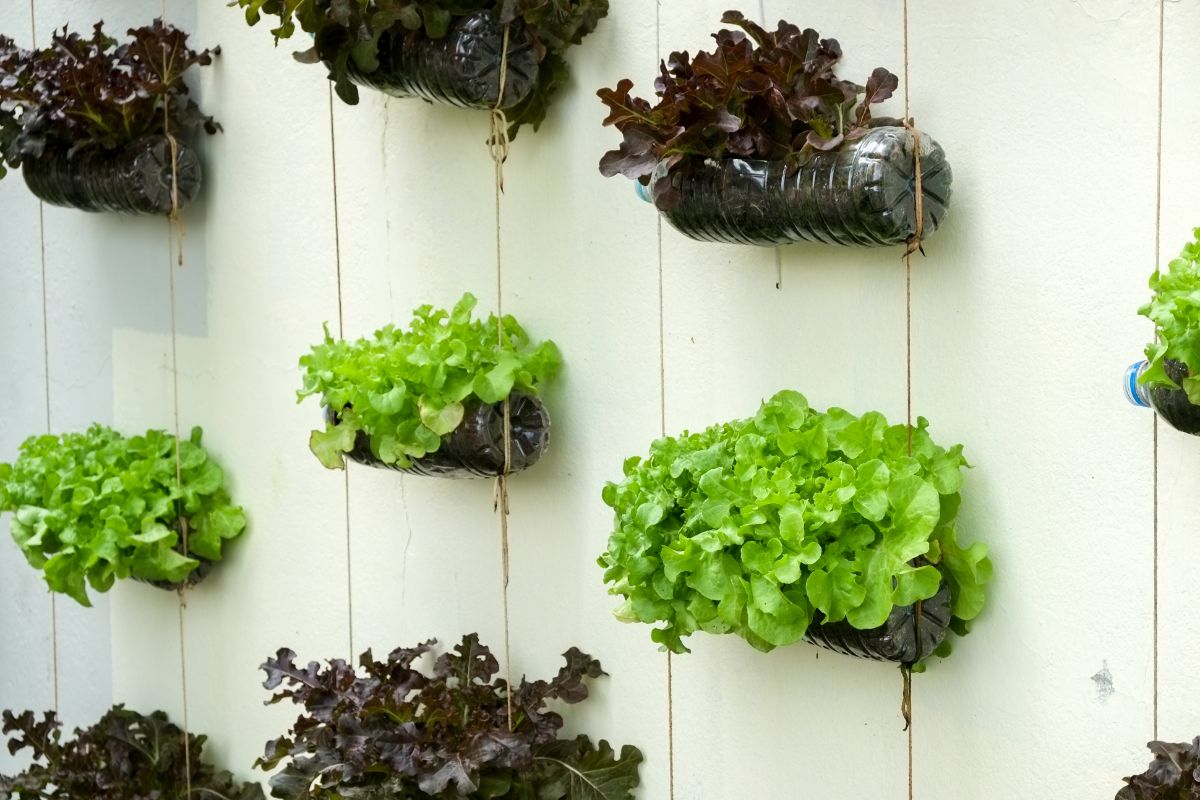
In addition to vegetables, there are several fruits and berries and several herbs and edible flowers that you can grow in hanging baskets, pails, or planters. You can have a whole garden of edible plants gracing your walls and rafters. What better than a bounty of beautiful food dripping from the space above you?

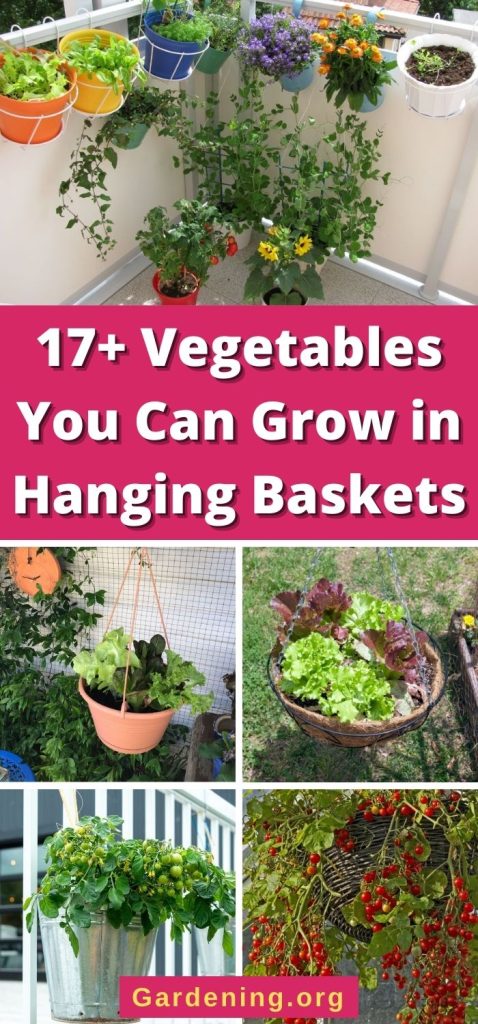
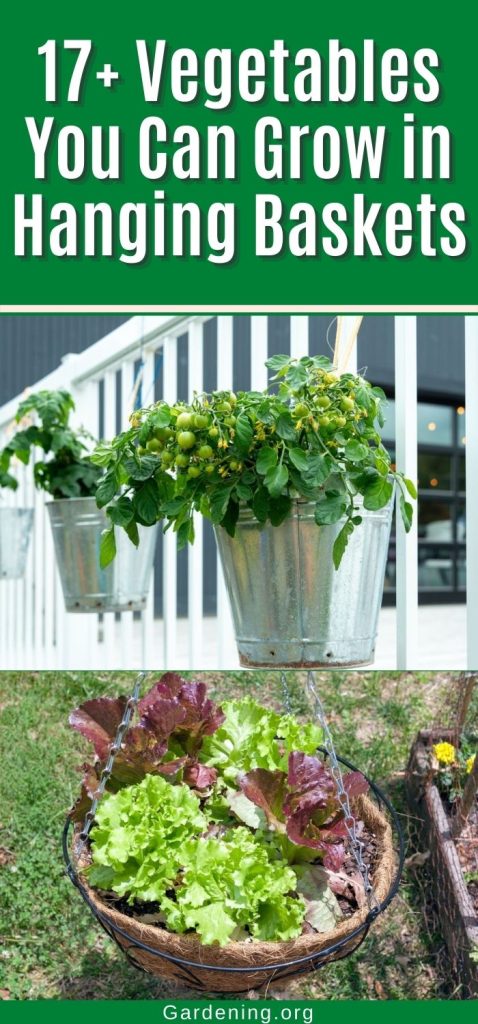
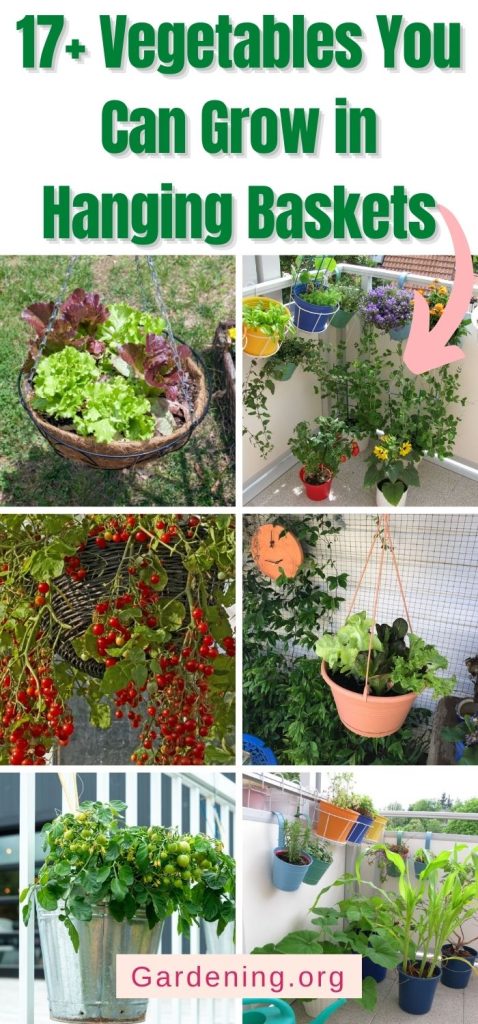
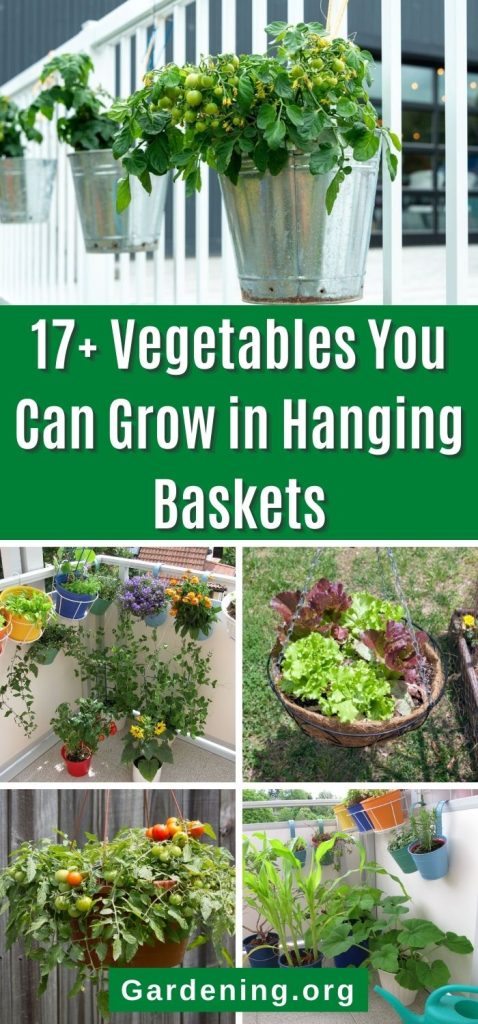
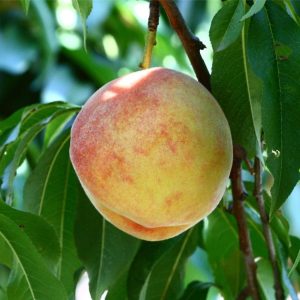
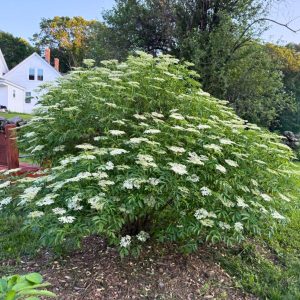
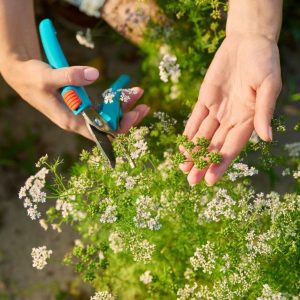
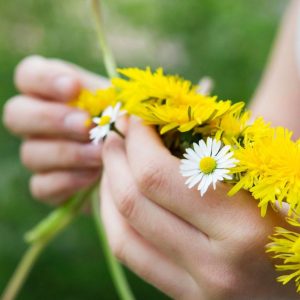
Leave a Reply